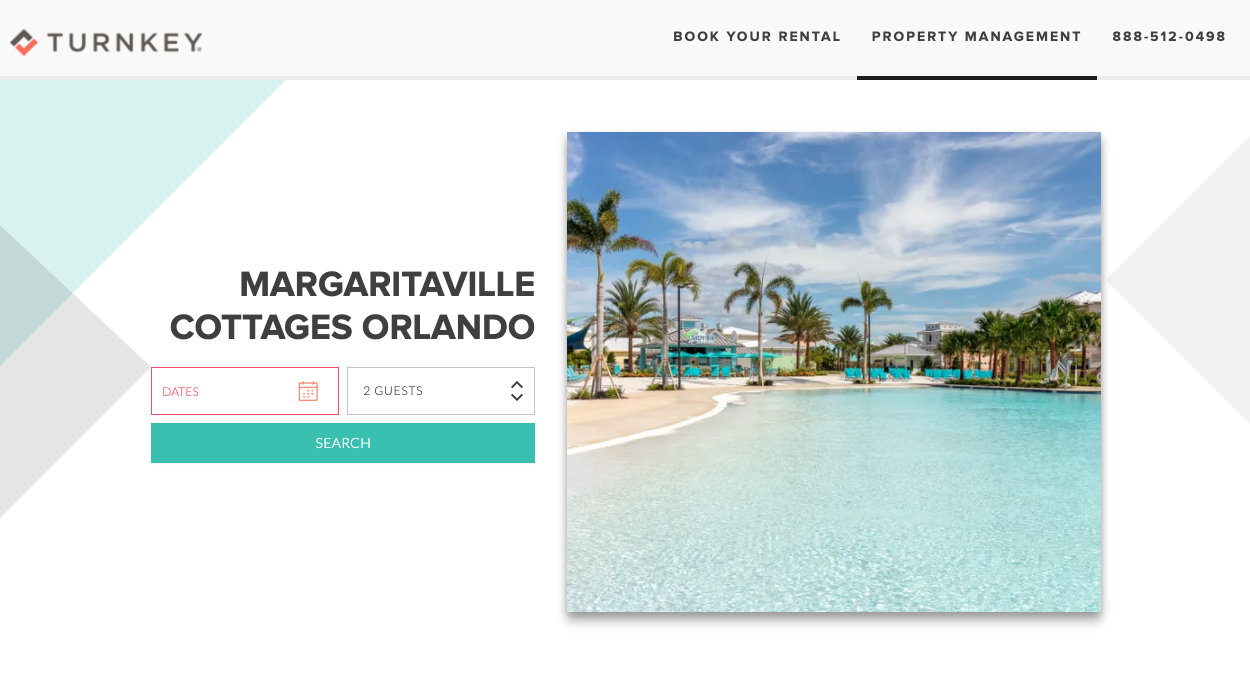Resort Pages
TurnKey had a number of large, multi-unit clients who required special treatment on our website. These included resort communities, condo buildings, HOAs, Bed and Breakfasts, and hotels — generally the same clients that we provided whitelabel websites for.
On the TurnKey website proper, these clients had strict requirements for how their brand names were used and displayed, the two main ones being:
When the client’s name is searched, only units belonging to the client appear as results.
The client should have their own page displaying all of their units, a link to which needed to be included in TK’s destination navigation lists
The client should somehow be represented on the Market page
Given that the TurnKey funnel was built around a geo-search which accepted any location and served all results in that area, and a Market landing page structure which pushed users into a geo-search, we needed a new solution to meet these requirements.
Resort Pages
To start, we’d extend the Market page template to a new page type, which we called Resort Pages. Resort pages would have many of the same features Market pages did, but with an important difference: they’d only show units belonging to that resort, even when searched.
Resort pages would be created the same way Market pages were in our CMS, with a simply toggle to switch between the templates.
When I enter dates and click search on a Resort page, instead of going into the geo-search experience, I’d see the units listed on the resort page filtered for that date:
The Resort page also included featured rentals that the client could request:
Custom Search Override
But what if a user searched the resort’s name from the homepage search bar? That would still put them into a geo-search that would include units other than those belonging to the client.
So, we extended a custom search override feature we’d previously built for custom search terms to cover resort pages as well. This tool was used to add search autocomplete terms into the Google Maps (later MapBox) suggestions in the search location field. A Search Autocomplete Term took a fragment (to begin matching on once the user had entered it in the field), a display name (to suggest once the fragment was matched), and a destination (a search center). To extend this to work with Resort pages, we added a type (Geo or Resort) to the SAT object. When the type was set to ‘Resort’ we knew not to send the user into the search experience but to forward them to the provided Resort page.
CMS view of a Search Autocomplete Term for Palmilla Beach
Palmilla Beach appearing in the autocomplete. If selected, the user will be forwarded to the Resort page instead of the typical search experience
Resort Callout on Market page
Resort clients also expected to be discoverable from the appropriate Market page. We created a special new section to allow them to be displayed. This was powered by a new object in our CMS that allowed us to create and edit featured resorts on Market pages. The view rentals button links to the Resort page.







